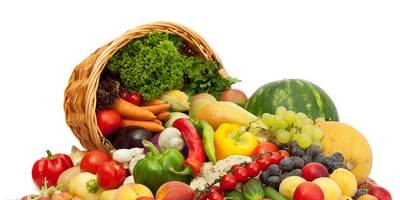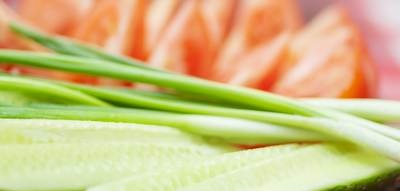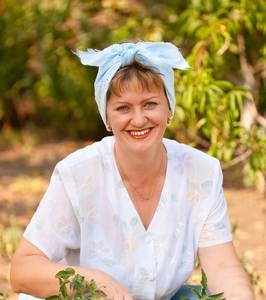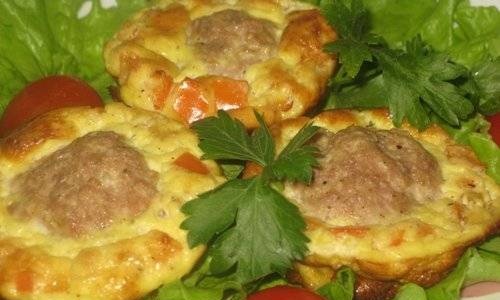|
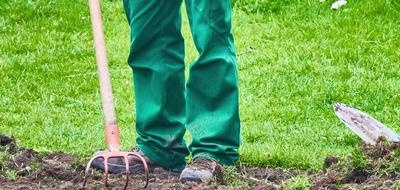 Of course, none of us is born a gardener, and we don't have anything like that in our genes. But many of us dream of a garden we planted with our own hands. And here it is appropriate to recall one good saying: "The tree is soon planted, but not soon the fruits are eaten from it." Of course, none of us is born a gardener, and we don't have anything like that in our genes. But many of us dream of a garden we planted with our own hands. And here it is appropriate to recall one good saying: "The tree is soon planted, but not soon the fruits are eaten from it."
The garden still needs to be laid, nurtured. And this is a huge and painstaking work, in which there are not and cannot be trifles. For example, before laying a garden, it is necessary to determine what, in fact, is the area that we have allocated for it. An acquaintance of mine almost made a serious mistake. Before he could get a land plot, he immediately zealously set about planting plums and apple trees, pears and cherries ... And his land was solid peat. Plus, the water was very close to everything. It is good that he was prompted in time to find a way out - to plant fruit trees on the "hills", or, as they are also called, "hills". Why? Because the trees (do not lift each one to the "hill") would be doomed to death, since their root systems, having reached the level of groundwater, would certainly get sick: they would not have enough oxygen or heat.
Some believe that, in this case, if they put sheets of slate or iron on the bottom of the planting pit, the path to the groundwater will be closed to the roots of fruit trees. And everything will go like clockwork. This is another delusion. The only way out is "hill".
How to design it? From foliage, grass, tops, branches, reeds, stems of fertile raspberries, all kinds of construction and household waste, even from cans and other pieces of iron that have become unnecessary. Time will pass and this layer will turn into nutritious humus. So the "hill" is ready for you. Its most acceptable size: at the base, diameter - 3 m, at the top - 2 m, height - 1.5 m.
All that you have collected for the construction of the "hill", lay in layers, compact well and pour water. Of course, construction waste, metal, the same cans for canned food should be at the base of the "hill". And further. In this case, you should not dig a planting hole, just as you should not make a "hill" from field soil. First, it will be cold. And secondly, it will require constant fertilization.
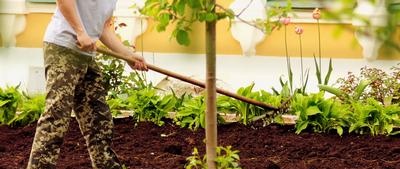 One of the gardeners claims that the plants planted at the top of the "hill" enter the growing season earlier and bear fruit. Moreover, on its top you can safely place heels of seedlings of various fruit crops, and between them - currants or gooseberries. The seedlings are best placed obliquely (at an angle of 20 to 40 degrees). One of the gardeners claims that the plants planted at the top of the "hill" enter the growing season earlier and bear fruit. Moreover, on its top you can safely place heels of seedlings of various fruit crops, and between them - currants or gooseberries. The seedlings are best placed obliquely (at an angle of 20 to 40 degrees).
By the way, there are some areas that are generally of little use for fruit crops. Both the microrelief and the composition of the soil are not the same ... In this case, it is much wiser to give preference to berries and flowers, rather than experiment, knowing in advance that this is unlikely to bring success.
It is advisable to have other information in advance: how do certain varieties and breeds of fruit and berry crops relate to temperature, soil composition, and moisture content? Cherries and gooseberries, for example, are the most drought tolerant. Apple trees and pears do not tolerate drought so well, but in principle they do. And plums, raspberries, black currants, not without reason, are considered unambiguously hygrophilous.
It is, of course, the richer the garden plot, the better. But if it is heavily overloaded with trees and shrubs, then do not count on a good harvest of berries and fruits. The fact is that horticultural crops love light. And cheat them for them, they, in turn, cheat the owners of the harvest.
And here is another essential recommendation that only expert gardeners remember. Fruit trees should preferably be placed on the north, north-west or north-east side of the site.Let in the north we have apple and pear trees, in the south - the same strawberries, and between them cherries, plums, berry bushes. In a word, it is necessary that the height of the plants grow in the direction from south to north. Only in this way will we satisfy their constant need for light.
When laying a garden, be sure to remember that you have neighbors, that in accordance with the Standard Charter of a horticultural partnership, a fruit tree must be planted at least 3 m from the border of the site, and berry bushes - at least a meter from the fence separating yours and the neighboring plots.
For a novice gardener, the question is fundamentally important: how to prepare the site for planting fruit trees? First, a thorough digging of the earth should be carried out before planting them. In spring or summer, the turfed area is dug up to a depth of 10 cm. At the same time, the sod is thoroughly crushed and turned over. Next, they dig up the site in the fall, for the second time, but to a depth of 2 times greater. At the same time, fertilizers are applied to the soil. The next spring is coming, and the site must be dug again, to a depth of 15 cm, trying not to turn the sod and fertilizers to the surface.
By the way, remember: planting material is purchased in spring or autumn. Dig in the seedlings purchased in the fall for the winter. This is usually done like this. On the garden plot, a high place is selected (yes, look, there is again no groundwater!), A trench is dug about 0.5 m deep. One of its sides is cut off with a shovel at an angle of 45 degrees. You should lower the roots of the seedlings into the trench, and place the trunks themselves obliquely on the side that you previously cut with a shovel. The roots are covered with necessarily loose soil and up to the very place where they pass into the trunks. Remember to compact the soil and water it well. And the trunks and skeletal branches that turned out to be on the surface of the earth must be covered in the most careful way both from above and from below with spruce branches. The latter will protect them from mice. But so that the seedlings do not freeze in winter, as soon as persistent and severe frosts set in, do not be too lazy to compact the layer of earth above the root systems by 20-30 cm.
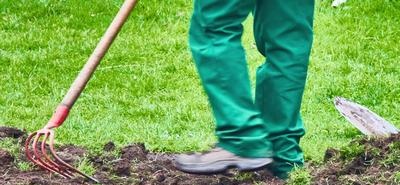 In parallel with the digging of the planting material in the same autumn, prepare the planting pits so that they come up by spring, they are ready in the full sense of the word. Under apple and pear trees, these pits should be about a meter in diameter and up to 70-80 cm deep, under cherries and plums - 60 and 40 cm, respectively. In parallel with the digging of the planting material in the same autumn, prepare the planting pits so that they come up by spring, they are ready in the full sense of the word. Under apple and pear trees, these pits should be about a meter in diameter and up to 70-80 cm deep, under cherries and plums - 60 and 40 cm, respectively.
Your seedlings will grow in their designated place for many years. Therefore, the planting pits must be carefully filled with fertilizers so that at first fragile trees do not lack them. But just be careful not to add nitrogen fertilizers and lime there.
One unlucky gardener did this, and then repented for a long time, because the roots of the seedlings received serious burns. Some gardeners add buckets of 3 humus or 5-6 buckets of compost, with 0.5 kg of superphosphate and no more than 150 g of potash fertilizers, to the planting pits for seed pods. The amount of all kinds of fertilizers for stone fruits should be 2 times less than for seed crops. And this rule cannot be ignored.
Have you prepared a pit? Fine! In its center, on the south side of the seedling, drive in a small straight stake and attach a tree to it so that the place where the root passes into the trunk is 5 cm above the soil level. You ask: why stake? Everything is very simple. It is designed to protect the seedling (after all, it is attached to it) from loosening by the wind and sunburn. The peg is driven in from the southern side, and this is not in vain. When everything is done, the root system of the tree is covered with earth and compacted with a foot. Having formed a shallow hole around the seedling, fill it well with water. Two buckets of water will do just fine. Now mulch this hole with peat or compost.
Who else, but I think that planting a garden is a historic event.Even if it is very small, belonging to the same family, it is still an event, because with its birth on earth there was one more miracle. Time will pass, and one day in the spring he will dress in a snow-white outfit, give the surrounding air a scent, and then give you fruits. So let your children prepare this event with you, let them see all the multifaceted and hard work, learn to avoid mistakes, especially when planting seedlings, gain experience that will definitely come in handy in life. Where else will they learn this, if not in childhood and in their own family? You are digging the soil in the garden area - let the child work with you. Small still wield an "adult" shovel - let him bring fertilizers in his small bucket. And if it is already big enough, stepped over the first decade, it is quite possible to entrust it with the same pruner. The day before planting the seedlings, under your guidance, your son will cut off the damaged roots.
By the way, it is most convenient to plant a tree together. One holds the seedling, straightens its roots, the other covers them with earth, periodically compacting it. So let your son or daughter work with you. Let them learn to plant trees. I sincerely feel sorry for the people who have not planted a single tree in their lives. They
destitute, because they did not manage to leave such a green, reaching for the sky and light, giving people freshness and fruits "trail". Just imagine for a moment what pride (and it will be an extremely noble feeling!) The heart of a child will be filled when the apple tree in which he took part in planting blooms. The child will grow. And the tree too. But every time you meet him, your son (or daughter) will feel joy and tenderness. Here it is! My! It stretches upward, prettier, gives fruit ... It was I who planted it, I watered, looked after, protected from diseases, harvested ... Maybe even once planting a tree and looking after it, a child will never break off a single branch any other tree, even a wild one. He will already know how much work needs to be invested in order for the trees to grow and bloom. And no matter what you do in the garden, no matter how busy you are with thinking about the economy and doing it, you should know: there is a child nearby, he needs attention, he will happily comprehend the science of working on the ground and will be forever grateful to you for that.
It is no secret that it is simply impossible to buy good planting material, and one should try to grow the seedlings ourselves. How? To do this, you need to know what budding and vaccination are. Learn for yourself and involve children in the learning process. So, budding is the main breeding method for tree varieties. Pome and stone fruit breeds are inoculated in July - August, during the summer sap flow. The day before the operation, the stems of the rootstocks up to 15 cm in height from the root collar are freed from lateral ramifications. To do this, you must have a garden knife on hand. The cuttings from which you intend to take the buds for grafting are cut the day before budding from fruiting trees of the desired variety and have already been tested for yield. These cuttings are then kept in the refrigerator wrapped in a rag. Yes, one more nuance. The most developed buds located on the middle part of the shoot should go into action. With a special knife, a well-developed kidney is cut from the handle - a peephole with a shield, in other words, a narrow strip of bark with a thin layer of wood. The length of the shield is approximately 2.5-3.5 cm. It is best if the peephole is located just in the middle of the shield. Next, a T-shaped incision is made on the stock, a shield is inserted into it, and then tightly tied with a soft twine, washcloth or synthetic film, without closing the buds of the shield. After half a month, the strapping on the vaccine can be loosened.
For propagation of varieties of fruit crops, grafting is used with a cuttings, which is carried out during sap flow. To do this, use cuttings harvested in autumn or early winter. You can store them in the snow, refrigerator or basement in a regular plastic bag.Make sure that the grafted tree is healthy, the cuttings from it are not frozen or, on the contrary, too dry, so that the grafting sections are clean, smooth and aligned with the cutting surface of the cutting. The site of inoculation, by the way, just like the site of budding, is tightly tied and covered with the so-called garden broth. It is made from rosin, wax and fat, which give the composition resistance to weathering and stickiness. After a month, the harness covered with garden varnish can be removed.
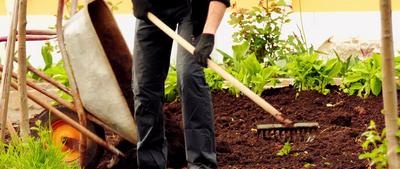 It is very important to be able to properly prune fruit trees. When, in the early years of their growth, you remove unsuccessfully located and intersecting branches, you create a compact, comfortable crown in all respects. This pruning is called formative. When the tree bears fruit, you carry out a different kind of pruning - regulating, that is, you regulate the balance between growth and fruiting, try to ensure that the crown is replenished with new branches that can bear fruit, and other branches do not interfere with this. And finally, rejuvenating pruning, when the inwardly extending crowns, strongly overlapping branches, making the crown excessively dense, are removed. It is very important to be able to properly prune fruit trees. When, in the early years of their growth, you remove unsuccessfully located and intersecting branches, you create a compact, comfortable crown in all respects. This pruning is called formative. When the tree bears fruit, you carry out a different kind of pruning - regulating, that is, you regulate the balance between growth and fruiting, try to ensure that the crown is replenished with new branches that can bear fruit, and other branches do not interfere with this. And finally, rejuvenating pruning, when the inwardly extending crowns, strongly overlapping branches, making the crown excessively dense, are removed.
In general, the garden requires careful maintenance. When the fruit trees are still young, their trunks must be kept loose.
In the early years of their development, fruit trees are very fond of moisture. Naturally, they must be well watered. In order for their root systems to actively develop, during the same period, you can overlay the tree with rotted manure or compost. And in general, after a year has passed since planting, it would be nice to regularly introduce organic matter into the trunk circle. For 1 sq. m 3 kg is enough "for the eyes". Phosphorus fertilizers are also useful for the root system of a young tree, but the use of nitrogen fertilizers must be abandoned. They are known to interfere with the rooting of yesterday's seedling.
But you, like me, probably cannot imagine a garden without raspberries and strawberries, gooseberries and currants ... But how to start, for example, a strawberry plantation? Do not know? I will gladly tell you. First of all, you need to get a pure-grade planting material. Seedlings should have at least three leaves on short petioles and a root system 5-6 cm long. This culture is planted mainly without ridges, but the corner intended for it should be even. If your site is located in a lowland, then the beds are required, otherwise the plants will get wet. Planting strawberries is easy. Seedlings are placed in a hole, the roots are spread and covered with soil up to half of the hole, tightly pressing the earth to the roots. Are they pinned down? Now fill up the entire hole and compact the soil again. The best dates for planting strawberries are the end of April and the first decade of September.
There should be a distance of about 70 cm between the strawberry beds. It can be cut, and even halved, provided that you are dealing with a strawberry variety with a powerful bush. And further. For this garden culture, and it is cultivated on the same plot for 3-4 years in a row, sometimes for 5 years, it is advisable to allocate soils rich in humus.
And now a few words about the placement of different varieties of strawberries. It is most logical to group them by ripening time. There are varieties of early, medium and late varieties. Follow this rule - it will be easier to care for the plantation and harvest.
But the landing is over. And it's time to start watering. Each plant needs to be provided with about half a liter of moisture. Remember, strawberries are a moisture-loving culture.
Two weeks have passed - check how your seedlings have taken root. Plant a new one in the place of the deceased. And a month after the spring planting, the soil should be slightly loosened (to a depth of 4 cm), trying not to damage the plant roots. If we are talking about autumn planting, then loosening of the soil in this case is carried out only in the aisles.
In the first 2 years after the plantation was laid, the land does not need to be fertilized, especially if you have well refueled the plot before making
each of its square meters for 3-4 kg of manure. And after 2 years, it is simply necessary to reintroduce manure or compost - 2-3 kg per running meter of the row.
Gooseberries and currants are cultivated in about the same way. By the way, both crops are quite winter-hardy and fruitful. Black currant, whose berries are so rich in vitamins, is a shade-tolerant and moisture-loving culture. It will perfectly take root in a low and humid area, but, of course, not in a swampy area. Such an extreme is not for her. But red and white currants need a more open and dry place. Landing is easy. You dig a hole (about 40 cm deep and 0.5 m wide), fill it in three I quarters of fertile soil mixed with fertilizer. A couple of buckets of humus or peat, up to 200 g of superphosphate and about 30-40 g of wood ash should be added to one hole. By the way, like strawberries, currants and gooseberries can be planted both in spring and autumn. Go ahead. You have done everything described above and planted a currant bush. Now compact the earth and form a traditional hole around it, into which it is advisable to pour a fourth to fifth of a bucket of water. Such agrotechnical techniques as loosening (and regular, at least 2 times a week) and weeding are required. A year has passed since planting - start fertilizing the soil. But remember, if nitrogen fertilizers can be applied annually, then phosphorus and potash fertilizers can be applied only once every two years. Blackcurrant bushes will only give you an abundance of berries if you carefully cut off the outdated or weakest branches in places of thickening every year. The same rule applies to gooseberries.
By the way, have you ever heard of the thornless gooseberry? About one that constantly bears fruit during the summer and gives a large and sweet berry. Since he does not have thorns, you can safely involve children in his harvesting. By the way, it can grow and bear fruit in one place for almost 40 years. One thing is required - to constantly do pruning so that young shoots appear and yield does not fall. Amateur gardeners with experience assure that the fruits of the thornless gooseberry are a storehouse of useful substances. They contain iron and phosphorus, calcium and pectin substances, fructose and sucrose. Its berries are healing in the literal sense of the word. To see this, eat them for two to three weeks in a row, and you will see how your well-being improves.
The best fertilizer for this amazing gooseberry is bird droppings. The most optimal time for landing in central Russia is the end of September.
Do not worry, we did not forget to talk with you about what can and should be opposed to pests and diseases of fruit and berry crops. We understand that this is extremely important. Gooseberries and currants, for example, are capable of inflicting a lot of harm on the moth. The easiest way to deal with her is to prevent her butterflies from emerging from the soil. Do you have roofing material or roofing felt? Fine! So, in the fall or early spring, as soon as the snow melts, lay roofing felt or roofing felt under the gooseberry and currant bushes (over the entire projection area of their branches). Neither the moth nor another pest - the sawfly, hibernating in the soil under the crown of currant and gooseberry bushes in the pupal stage, will no longer fly out of their wintering places. Cultures have faded - and roofing felt and roofing felt can be removed. They did their useful job.
 And here is another recipe, also quite simple and approved a thousand times by gardeners who grow Gigantella strawberries. For my taste, its berries are perhaps the most delicious and aromatic. To attract beneficial insects, anise, coriander are planted along the edges of the strawberry bed, and garlic (yes, yes, it is his) or terry calendula to repel pests. In a word, you can do without pesticides here. The people have accumulated a wealth of experience, a whole range of protective measures has been developed for all cultures. Both garden and garden. By the way, to scare off pests, it is quite possible to spray some plants with decoctions or infusions of tobacco, garlic, tomato leaves. And here is another recipe, also quite simple and approved a thousand times by gardeners who grow Gigantella strawberries. For my taste, its berries are perhaps the most delicious and aromatic. To attract beneficial insects, anise, coriander are planted along the edges of the strawberry bed, and garlic (yes, yes, it is his) or terry calendula to repel pests. In a word, you can do without pesticides here. The people have accumulated a wealth of experience, a whole range of protective measures has been developed for all cultures. Both garden and garden. By the way, to scare off pests, it is quite possible to spray some plants with decoctions or infusions of tobacco, garlic, tomato leaves.
If someone nevertheless decides to use pesticides, trusting them more, here is one piece of advice: only in minimal quantities, having previously received advice from agrochemists. But if you have children, flatly refuse to use pesticides in your summer cottage. Where is the guarantee that, together with vegetables and fruits, they will not enter the fragile body of a little person? There is no such guarantee.
Of course, it is difficult to find a one hundred percent panacea for absolutely all diseases and pests of fruit and berry and vegetable crops. And there is hardly one. But we have something close to it at our disposal. This is the impeccable observance of agricultural techniques for the cultivation of all crops and competent, systematic weed control. Indeed, many troubles come from them.
Your children can also contribute to the noble cause of combating plant pests and diseases. Let them invite such useful birds as titmouse, jackdaw, starling to the site. Dad's task is to help his little son build a birdhouse for the same starling: let him come constantly, because it will already be - to his home. The kid learns that it is necessary to be friends with the titmouse, jackdaw, starling, because they defend the plants that he, the little summer resident, planted, watered, and nurtured with his dad and mom.
Sashina E.Yu. The ABC of Home Economics
|
 Of course, none of us is born a gardener, and we don't have anything like that in our genes. But many of us dream of a garden we planted with our own hands. And here it is appropriate to recall one good saying: "The tree is soon planted, but not soon the fruits are eaten from it."
Of course, none of us is born a gardener, and we don't have anything like that in our genes. But many of us dream of a garden we planted with our own hands. And here it is appropriate to recall one good saying: "The tree is soon planted, but not soon the fruits are eaten from it." One of the gardeners claims that the plants planted at the top of the "hill" enter the growing season earlier and bear fruit. Moreover, on its top you can safely place heels of seedlings of various fruit crops, and between them - currants or gooseberries. The seedlings are best placed obliquely (at an angle of 20 to 40 degrees).
One of the gardeners claims that the plants planted at the top of the "hill" enter the growing season earlier and bear fruit. Moreover, on its top you can safely place heels of seedlings of various fruit crops, and between them - currants or gooseberries. The seedlings are best placed obliquely (at an angle of 20 to 40 degrees). In parallel with the digging of the planting material in the same autumn, prepare the planting pits so that they come up by spring, they are ready in the full sense of the word. Under apple and pear trees, these pits should be about a meter in diameter and up to 70-80 cm deep, under cherries and plums - 60 and 40 cm, respectively.
In parallel with the digging of the planting material in the same autumn, prepare the planting pits so that they come up by spring, they are ready in the full sense of the word. Under apple and pear trees, these pits should be about a meter in diameter and up to 70-80 cm deep, under cherries and plums - 60 and 40 cm, respectively. It is very important to be able to properly prune fruit trees. When, in the early years of their growth, you remove unsuccessfully located and intersecting branches, you create a compact, comfortable crown in all respects. This pruning is called formative. When the tree bears fruit, you carry out a different kind of pruning - regulating, that is, you regulate the balance between growth and fruiting, try to ensure that the crown is replenished with new branches that can bear fruit, and other branches do not interfere with this. And finally, rejuvenating pruning, when the inwardly extending crowns, strongly overlapping branches, making the crown excessively dense, are removed.
It is very important to be able to properly prune fruit trees. When, in the early years of their growth, you remove unsuccessfully located and intersecting branches, you create a compact, comfortable crown in all respects. This pruning is called formative. When the tree bears fruit, you carry out a different kind of pruning - regulating, that is, you regulate the balance between growth and fruiting, try to ensure that the crown is replenished with new branches that can bear fruit, and other branches do not interfere with this. And finally, rejuvenating pruning, when the inwardly extending crowns, strongly overlapping branches, making the crown excessively dense, are removed.